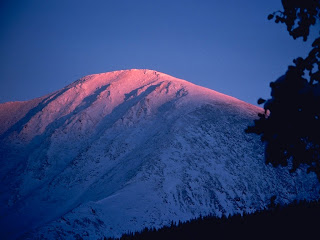
>> Computers, the hub of modern business and lifestyle, are considered to be the vanguard of clean technology that has freed us from the use of paper and unnecessary transportation. By default, the industry that produces computer is also perceived to be clean. However, a un study reveals that each computer at its birth uses at least 240 kg fossil fuels, 22 kg of chemicals and 1.5 tonnes of water-more than the weight of a rhinoceros
>> Behind every sleek global brand of digital desire, farmers and residents around component plants face the severe effects of toxic residue from the manufacturing plants in hich they are produced
>> The three major sectors of this industry are:
* Printed wiring board (pwb) manufacture
* Semiconductor chip manufacture
* Component assembly: facilities involved in the assembly of computers and other electrical devices
>> Far away from the glitzy headquarters of these brands, pwbs are largely produced in China and Thailand, while semiconductor chips are produced in Mexico and Phillipines
>> A chip of 2 grammes uses 30 kg of materials, including water, a large part of which is turned into highly toxic waste
>> Input for pwbs:
* Copper compound, flame retardants (tetrabromobisphenol), photoinitiators (thioxanthones)
* Epoxy resins, formaldehyde, chelating chemicals (a chelate is composed of a metal ion and a chelating agent.
A substance whose molecules can form several bonds to a single metal ion)
* Metallic solders (lead-tin or lead-free alloys, nickel, gold)
>> Input for semiconductors:
* Silicon, gallium, germanium, hafnium
* Hydrogen peroxide, nitric acid, sulphuric acid
* Arsenic, boron, antimony, phosphorous
>> Wastes impact groundwater:
* A pwb facility in Thailand contained chlorinated volatile organic chemicals, a group of chemicals widely used as solvents and reported as contaminants in groundwater
* Nonylphenol ethoxylate and a range of nonylphenols, persistent, bioaccumulative and toxic substances, used as surfactants, were found at a Mexican site
Waste and its health impact (common to pwbs, semiconductors and component assembly)
>> Polybrominated diphenyl ethers, widely used as brominated flame-retardants: endocrine disruptors, interfere with growth hormones and sexual development, affect immune system
>> Phthalates, widely used as plasticisers (softeners) in plastics: They are found in air and dust and are toxic. Affects liver and kidney at higher doses. Runs the risk of affecting food chain through crops. Also affects proteome formation and physiology and morphology of some crops during growth
>> Chlorinated solvents: Carcinogenic, affects central nervous system, liver and kidney. Affects skin, eyes, mucous membrane
>> High levels of heavy metals such as copper and nickel: pwb manufacturing processes use water-soluble copper compounds that can have serious impact on aquatic organisms and reduction in growth and fertility rates as well as increased morality. Some nickel compounds are toxic. They can have gastrointestinal and cardiac effects.
About 5 per cent of the population are nickel sensitive and can suffer at far lower doses. Some nickel compounds are carcinogenic as well.
>> Behind every sleek global brand of digital desire, farmers and residents around component plants face the severe effects of toxic residue from the manufacturing plants in hich they are produced
>> The three major sectors of this industry are:
* Printed wiring board (pwb) manufacture
* Semiconductor chip manufacture
* Component assembly: facilities involved in the assembly of computers and other electrical devices
>> Far away from the glitzy headquarters of these brands, pwbs are largely produced in China and Thailand, while semiconductor chips are produced in Mexico and Phillipines
>> A chip of 2 grammes uses 30 kg of materials, including water, a large part of which is turned into highly toxic waste
>> Input for pwbs:
* Copper compound, flame retardants (tetrabromobisphenol), photoinitiators (thioxanthones)
* Epoxy resins, formaldehyde, chelating chemicals (a chelate is composed of a metal ion and a chelating agent.
A substance whose molecules can form several bonds to a single metal ion)
* Metallic solders (lead-tin or lead-free alloys, nickel, gold)
>> Input for semiconductors:
* Silicon, gallium, germanium, hafnium
* Hydrogen peroxide, nitric acid, sulphuric acid
* Arsenic, boron, antimony, phosphorous
>> Wastes impact groundwater:
* A pwb facility in Thailand contained chlorinated volatile organic chemicals, a group of chemicals widely used as solvents and reported as contaminants in groundwater
* Nonylphenol ethoxylate and a range of nonylphenols, persistent, bioaccumulative and toxic substances, used as surfactants, were found at a Mexican site
Waste and its health impact (common to pwbs, semiconductors and component assembly)
>> Polybrominated diphenyl ethers, widely used as brominated flame-retardants: endocrine disruptors, interfere with growth hormones and sexual development, affect immune system
>> Phthalates, widely used as plasticisers (softeners) in plastics: They are found in air and dust and are toxic. Affects liver and kidney at higher doses. Runs the risk of affecting food chain through crops. Also affects proteome formation and physiology and morphology of some crops during growth
>> Chlorinated solvents: Carcinogenic, affects central nervous system, liver and kidney. Affects skin, eyes, mucous membrane
>> High levels of heavy metals such as copper and nickel: pwb manufacturing processes use water-soluble copper compounds that can have serious impact on aquatic organisms and reduction in growth and fertility rates as well as increased morality. Some nickel compounds are toxic. They can have gastrointestinal and cardiac effects.
About 5 per cent of the population are nickel sensitive and can suffer at far lower doses. Some nickel compounds are carcinogenic as well.
(Source: Cutting Edge Contamination, Greenpeace, February 2007)
Sponsored By:












































